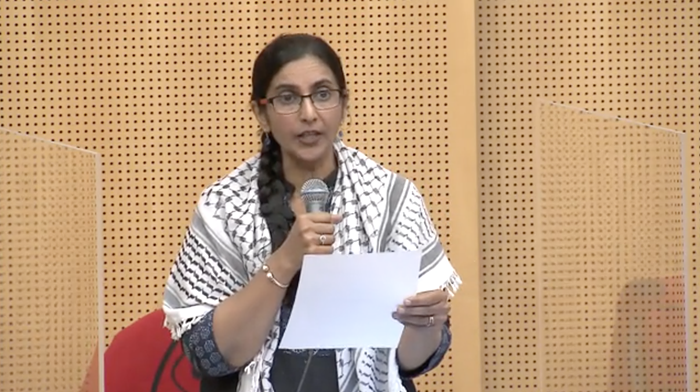On October 4, 2004, 18-year-old Antonio Pinto was shot and killed in broad daylight in an alley in South Park. Within days, police had identified a suspect, Wilber Jose Sorto, a suspected member of the Salvadoran gang Mara Salvatrucha, or MS-13. Sorto, now 25, is scheduled to go on trial for murder this week. Back in 2004, Sorto evaded authorities with flair. He might have slipped away entirely had he not gotten spooked by two immigration officials visiting a Federal Way address on an unrelated matter a full two weeks after the shooting. He engaged in a brief gun battle with one official and escaped, making it all the way to Southern California. Five days later, Immigration and Customs Enforcement officials arrested him outside a restaurant in L.A.
In court documents, Sorto's crime is described as a ruthless, violent execution. Police say he chased Pinto, who also had a lengthy rap sheet, trapped him in an alley, and shot him repeatedly in the body and face. In interviews with police, Sorto's own sisters confirmed his membership in Mara Salvatrucha, a gang whose much-anticipated spread through the United States has been widely doubted.
Although local papers had trouble spelling Sorto's name (Wilbur, Wilber), his story—ready for resurrection with the upcoming trial—is a perfect opportunity for the media to paint a world of trouble on the basis of a single tragedy. Increasingly, local stories on gangs and violent crime focus on one shocking statistic or incident without offering context or other examples. A 2005 story on an immigration sweep aimed at MS-13 noted just one example of a crime attributed to the gang: the murder charged to Sorto. The piece ended with this ominous quote from a special agent with the Bureau of Alcohol, Tobacco, Firearms and Explosives: "For so long, no one has wanted to say the word 'gang' in Seattle, or that we have gangs in Seattle, and we do."
Larry Evans, who works for the Seattle office of neighborhoods, started some of the city's first gang-intervention programs in the early 1990s. He says press reports on gang violence reinforce stereotypes without offering any real information. "There are some gang members in Seattle, some very serious ones," he says. "We do have a problem. I just don't necessarily trust the media to talk about it because they use these scare tactics."
The fearsome stories have continued. On December 6, the Post-Intelligencer linked the murder of King County Sheriff's Deputy Steve Cox, who was shot by a 23-year-old suspected gang member, to "resurging gun violence and gang activity plaguing Seattle."
Several P-I stories have cited police claims that gun assaults have jumped 26 percent in the Seattle area—but the stories don't explain how the statistics were made.
Police only began tracking aggravated assaults with guns in 2004. So to begin with, the number doesn't show anything like a long-term trend. More importantly, the statistic doesn't show what it promises: assaults with guns. Instead, police counted all aggravated assaults in which guns were "used, displayed, threatened, or implied," according to police spokesman Sean Whitcomb.
The statistic reflects the number of gun assaults so far this year over the same period in 2004. In total, there were 232 gun-related aggravated assaults in 2004, 287 in 2005, and 296 as of this October. In a sample of 203 of the cases from 2005, according the bureau, 72 cases involved someone actually getting shot. (The bureau can't provide the same breakdown for cases from 2004 or 2006.)
As for an explanation of organized crime's new wave, the P-I's Hector Castro offers this chestnut: "Some experts say it's stoked in part by gang-bangers who went to prison in the early 1990s and now are finishing their sentences." But the gang members who appear in most of his stories are too young to have spent any time in prison in the early 1990s.
Still, the papers don't entirely miss the mark. In Seattle, violent crime has risen 1.8 percent over last year. It's part of a national trend. This week, the FBI released data showing a 3.7 percent rise in violent crime for the first part of 2006, the second year in a row violent crime has slightly ticked up.
The numbers show a gradual increase—but say nothing about the cause or the context. It's still relatively rare to get bumped off in Seattle. As of October, 2006 has seen 25 murders and negligent homicides, compared to 24 in the same period last year—and this was the year of the Capitol Hill shootings. Violent crime rates still don't come close to approaching the rates of the mid-1990s. And, without solid evidence, it's impossible to say whether the rise in some kinds of crime in Seattle—where property crime has dropped—can be attributed to gangs.
There is even evidence that good news lies buried in the crime statistics. Jill Leovy, a crime reporter for the Los Angeles Times, recently analyzed federal mortality statistics for Salon.com and found that the homicide rate for black males has been falling since the 1950s.
Evans says youth gang patterns have changed since the swell of crack-related crime of the early 1990s. Today, especially in Seattle, he said, gang youths are less likely to be aligned with a formally organized gang, carrying out criminal orders from up the chain of power. More likely, he says, they hang out with friends they grew up with, sticking close to the streets they know.
And what of the menace of specific gangs, like the bloodthirsty Mara Salvatrucha? The Salvadoran gang began in the Pico Union neighborhood of Los Angeles in the 1980s and became popular in Central America largely through the distributive process of deportation. The extent of MS-13's redistribution back up through the United States, much forewarned by the FBI, has been widely contested.
Maru Mora-Villalpando, an organizer with the Washington Community Action Network, says that after an immigration raid and several outbursts of violence in South Park, community organizations began recruiting "at-risk" teens in the hopes of reaching current, or potential, members of MS-13.
"They couldn't find any," she says. The programs were successful in getting youths off the street and involved in art projects and environmental cleanups. But the kids who joined weren't violent gang members. "They were just regular kids," Mora-Villalpando says. 


















